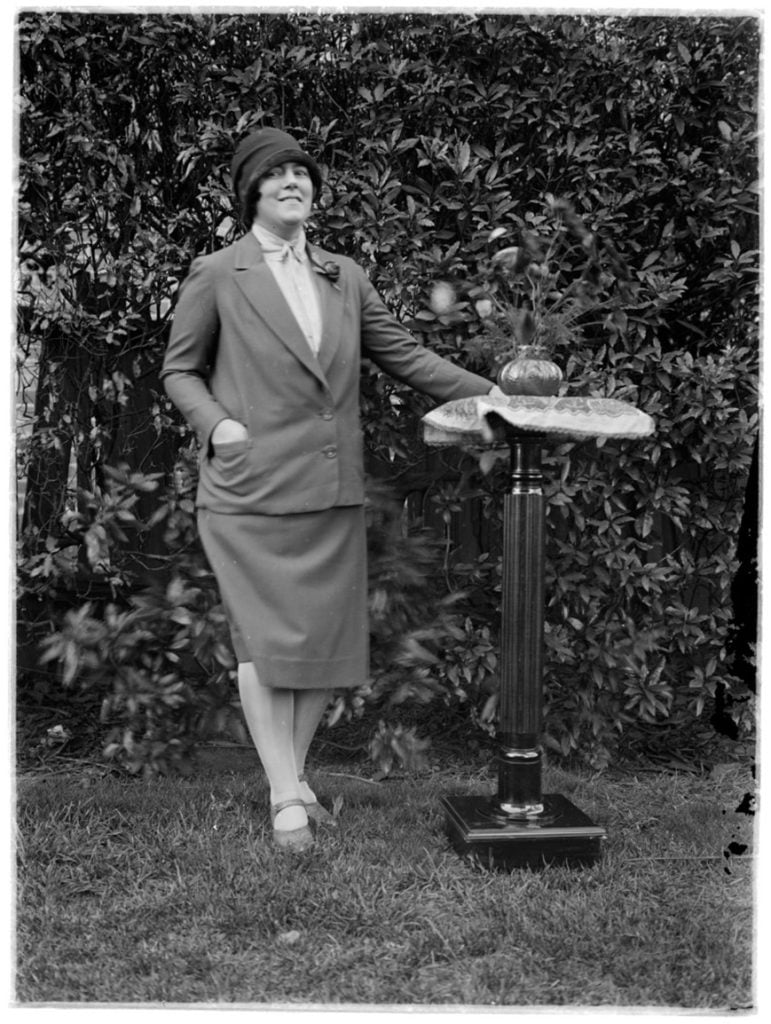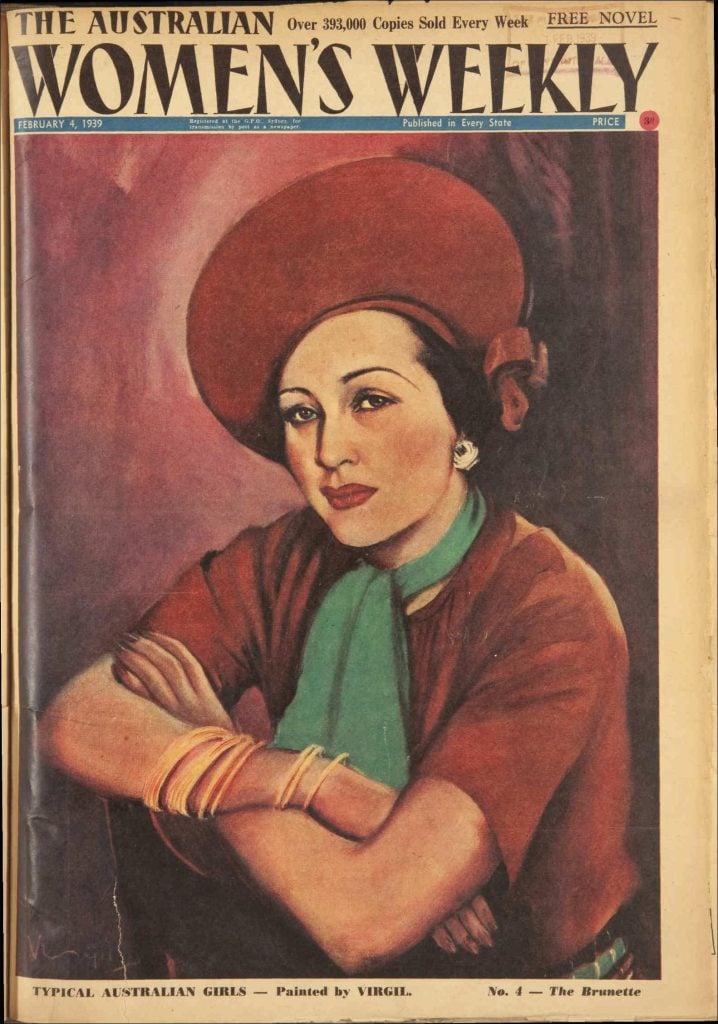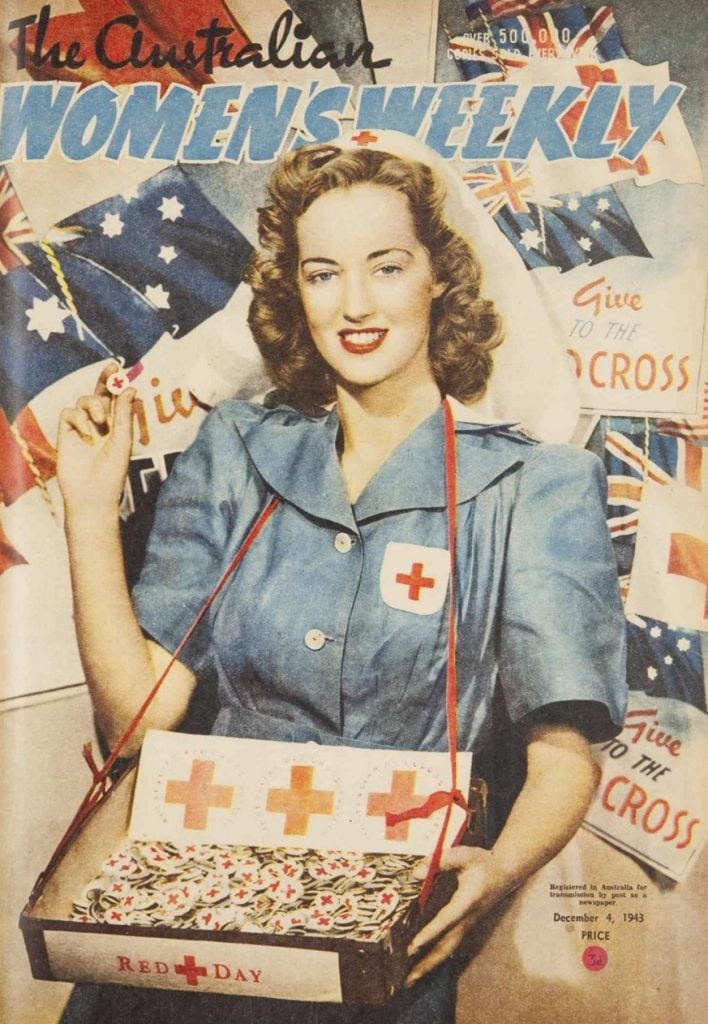Join us on a journey from the 1920s to now. See what women were wearing across the decades and which trends mark each changing era.
1920s-1950s
The 1920s were home to the flapper, a look that featured feathered headbands and short curled hair. Fashion for women was more androgynous than before, as they celebrated newfound freedoms gained during World War I. There was an emphasis on fun and frivolity for at least the first half of the decade. Fashion houses began to appear in Melbourne, clustered around the ‘Paris End’ of Collins Street.1 By the 1930s a more feminine approach to fashion had emerged but the impact of the Great Depression meant a focus on fabrics that were easy to wear and less expensive. Hem lines were longer. As women advocated for more equality, the 1930s also saw the first suits for women and the accessory of the day, a hat.


With the outbreak of World War II women were increasingly called upon to re-enter the workforce. During the 1940s there was a demand for workwear and practical clothing that would accommodate the wearing of gas masks.2 Fashion had less embellishments and many fashion houses in Paris shut down.3 Women were encouraged to recycle and reuse instead of buying new clothes. Knitting patterns began to appear in the Australian Women’s Weekly, prompting women to make their own clothes instead of buying new fashion.


The 1950s, in contrast to the previous two decades, saw a fetish for hyper femininity, emphasising the female form and popularising the hourglass silhouette. Women sought to emulate movie stars like Marilyn Monroe. Red lipstick became a beauty essential. Fashion also centred on the home as women were called back into the domestic sphere now that the men had returned from war. A glamorisation of the housewife took place. She was increasingly depicted in magazines wearing floral frocks alongside Bakelite canisters and new kitchen appliances in pastel colours.


1960s-1980s
Also known as the swinging 60s, the 1960s saw the appearance of youth fashion and with it the creation of a whole new consumer class.4 Jackets with Peter Pan collars, oversized buttons, gloves, and hats, all became part of the modern look for winter.5 Paris designers like Pierre Cardin and Yves Saint Laurent began experimenting with colour blocking. Asymmetry and geometrical patterns were popular. The shift dress and the mini skirt appeared, favouring a slight build that differed widely from the hourglass figure of the 1950s. The 1960s was also the era of the psychedelic, hippy movement, which influenced fashion through floral patterns in fluro pink and green.

1970s fashion moved entirely away from femininity. Culottes, trousers and pants suits became the latest trends. The 1970s also saw the emergence of Australian designers like Jenny Kee and Carla Zampatti. Australian women could access designer fashion made at home. The wave of multiculturalism inspired 1970s fashion with caftans and ponchos starting to feature.6
Heading into the 1980s Australian designers continued to gain prominence and fashion increasingly became seen as an art form. In 1983 Jillian Purvis and Julie Burt of Party Architecture held Fashion ‘83 at the Seaview Ballroom in St Kilda.7 The event featured avante garde and underground fashion in a show that was described as ‘part theatre’ and ‘part parade’.8 Screen printing textiles were popular at this time. Melbourne duo Gavin Brown and Matthew Flinn used bright colours and street culture to produce clothing that made use of this re-emerging trend.9 Ken Done also capitalised on the fashion as art aesthetic with his artworks appearing on everything from jumpers and T-shirts to bed covers and scarves. The 1980s stand out for their love of bold colours, gaudy jumpers, shoulder pads and the return of the hourglass silhouette.
1990s -2022
Acid wash jeans, scrunchies, Doc Martens, flannel shirts and parachute pants all heralded the arrival of 1990s fashion.10 In the middle of the ‘recession Australia had to have’ the culture of fashion was changing. There was more emphasis on local talent with designers like Colette Dinnigan, Leona Edmiston and Peter Morrissey making a name for themselves.11 In 1996 Melbourne held its first ever Melbourne Fashion Festival with the aim of inviting a public audience to take part in fashion culture.
As the 1990s gave way to the early 2000s the brief return of flared jeans (originally from the 1970s) took on a new form in the name of hipster jeans. These low-rise jeans were designed to be worn with a midriff top and were popularised by singers like Britney Spears and Christina Aguilera. Much like the miniskirts and shift dresses of the 1960s, this fashion favoured a slender figure.
The 2010s saw a revival of vintage fashion as the rockabilly look of the 1950s became popular again. Fitzroy’s vintage clothing stores on Brunswick and Gertrude Streets profited from a new appetite for vintage dresses. Melbourne, as usual, was at the centre of Australian fashion.
As we head into the mid 2020s the rise of fast fashion in colours like olive green and salmon pink, worn with white sneakers, means that fashion has become plainer, unlike the bright patterns of the 1960s or 1980s. Gone are the vintage dresses of the early 2010s, replaced with active wear and light denim. The impact of the global pandemic and months spent in lockdown means that work wear and weekend wear have become more casual as we grew accustomed to staying home and wearing anything we pleased. Fashion is also increasingly dictated by influencers on social media rather than by magazines or television. The rise of the plus size Instagrammer and the body positivity movement is slowly helping fashion to become more accessible and inclusive.
It’s too early to say what the fashion legacy of the 2020s will be, but let’s hope hipster jeans don’t make a comeback…
More to explore
Got a passion for fashion? Sign up for library membership and you can access our eresources, Berg Fashion Library and Vogue Archive. To find out more about fashion culture in Australia check out our Fashion Research Guide.
- Di Trocchio, P, 2016, 200 Years of Australian Fashion, National Gallery of Victoria, Melbourne, p 44
- Thomas, D, 2014, Fashion: The First Fifty Years, NLA Publishing, Canberra
- As above
- As above
- As above
- As above
- Di Trocchio, P, 2016, 200 Years of Australian Fashion, National Gallery of Victoria, Melbourne, p 44
- As above, p 89
- As above
- Marie Claire, 2022, The 100 most memorable ’90s fashion moments, Marie Claire website, accessed 13 April 2022
- Di Trocchio, P, 2016, 200 Years of Australian Fashion, National Gallery of Victoria, Melbourne




Have a friend who turns 100 on 2 April and hates the idaa of being made aware of it.. Howver have been researching the eras, and of fact that she lived through some of the most elegent ones, She comes from a famly of strong wormen, going back to convict days.
And herself, worked in a man’s field, but was treated like a lady.
Having found youir blog, it helps what I was going to do for her, We love Suzanne, she’s a lady who wears hats and scares and necklaces really well, and is up to date intellectually.
Rather than focus on the number, I want to do something that emphasises on her being a person who us ageless, In fact have often said that we want to wrap her in cotton wool.
Do you have any handouts on fashion?
Hi Lynette,
Thank you for your comment.
We don’t have handouts on fashion, sorry, but we have some online research guides on Fashion- which focus on the Library’s fashion resources
https://guides.slv.vic.gov.au/fashion
Hope the party is great!
Paul